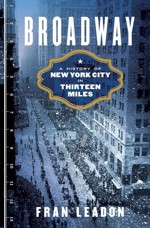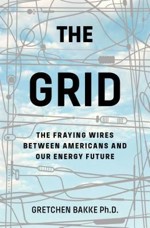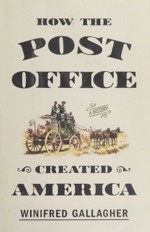Content tagged with “infrastructure” under “My Library”
There are 23 item(s) tagged with “infrastructure” in this section.
See items tagged with “infrastructure” across the entire site.
Other tags used by these items: history, nyc, buildings, engineering, shipping, new york city, transportation, tech, health, architecture
“A lovely collection of blog posts about all the hidden stuff in your city. Why lampposts are shaped the way they are. Why manhole covers are round. What the markings on sidewalks mean. It’s a great reader – every ‘chapter’ is really just a blog post or podcast episode, so you can read 4-5 of them…”

“This is a lovely history of New York City, focused down to a single street. It follows Broadway north from the southern tip of Manhattan, mile by mile, and talks about the history of the city as the street moved northward. Along the way, it has random vignettes of things that happened on the…”

“A magisterial history of the Hoover Dam, all the way from the problems of the late 1800s that it was meant to solve, through the arguments during its planning, to the construction and beyond (in fact, they don’t even start building the dam until halfway through the book). The Hoover Dam was an…”

“I have wanted to read this book for ages. I have a weird fascination with urban planning, and this book is held up as seminal. It’s from the 60s, and was written by the legendary Jane Jacobs. What I find interesting about the book is where it starts: with a chapter on sidewalks. I remember…”

“This is a well-researched book, but seems disorganized. It felt like it jumped around a lot, especially between scopes – from macro to micro. The major points I learned: Electricity is unlike any other resource in that it’s not a storable thing. When you use it, it was generated a fraction of a…”

“This book absolutely achieves what it sets out to do. It’s a glossy, illustrated love letter about how skyscrapers are built and managed. If that’s what you want, then this is your book. It’s not very deep, but it doesn’t really try to be. The illustrations are well-done and helpful. There are…”

“This book was okay. It’s not what I expected. It talks about infrastructure, but really from a systems and societal perspective. It talks about the ideas of sharing infrastructure, and how that infrastructure has played out in our society. It also goes deep into the effects on women and minorities,…”

“This is an extremely short book (like, 100 small pages with lots and lots of pictures). Start to finish, it might take you 30 minutes. It’s more of a handbook of the different physical markers you can find of the internet in NYC. It has a directory of manhole covers, for instance, and descriptions…”

“I like the subjects of Rose George’s books. She writes about the background stuff that we don’t think about. This book is about the global shipping trade. She wrote another entire book about going to the bathroom . I think these subjects are interesting. But I don’t love how she writes about them….”

“This is the definitive history of oil, from the first discovery in the 1850s through the first Gulf War of of the 1990s. It’s a lot – 900-some-odd pages. Not for the faint of heart. I actually brought back in college in the mid-90s, and never finished it. I promised myself I’d get back to it, and…”

“Really enjoyed this book. The author decided he wanted to ‘visit the Internet.’ The…physical Internet. Each chapter is a look at some physical manifestation of what makes the Internet go, from Internet exchange points to undersea cables to data centers. Along the way you work with road crews…”

“A wonderful history of the telegraph which proves that all of the ‘novel’ problems the Internet brought about actually happened 150 years earlier. Standage pays social attention to the societal changes that the telegraph wrought, and the effect it had on the lives of the telegraph operators who…”

“Genuinely one of the most interesting books I’ve ever read, hands down. Speck explains why and how our cities started being designed first for cars, then for people, and why this is bad. Then he gives us 10 ways to change it, from increasing pedestrian safety, to fixing parking, to making the…”

“If you’ve read ‘Walkable City,’ I don’t know that there’s much new here, but it’s more approachable. There are 101 smaller ‘rules’ about how to fix cities and make them more friendly to pedestrians. It’s clearly geared to local politicians and city planners, but I am neither and I loved it. If you…”

“A solid book that’s an introduction to engineering. It explains – in the clearest, simplest way – how buildings stay upright. It talks about loads, materials, and different ways of organizing those in a never-ending war with gravity. Along the way, the book looks at some historic structures and why…”






